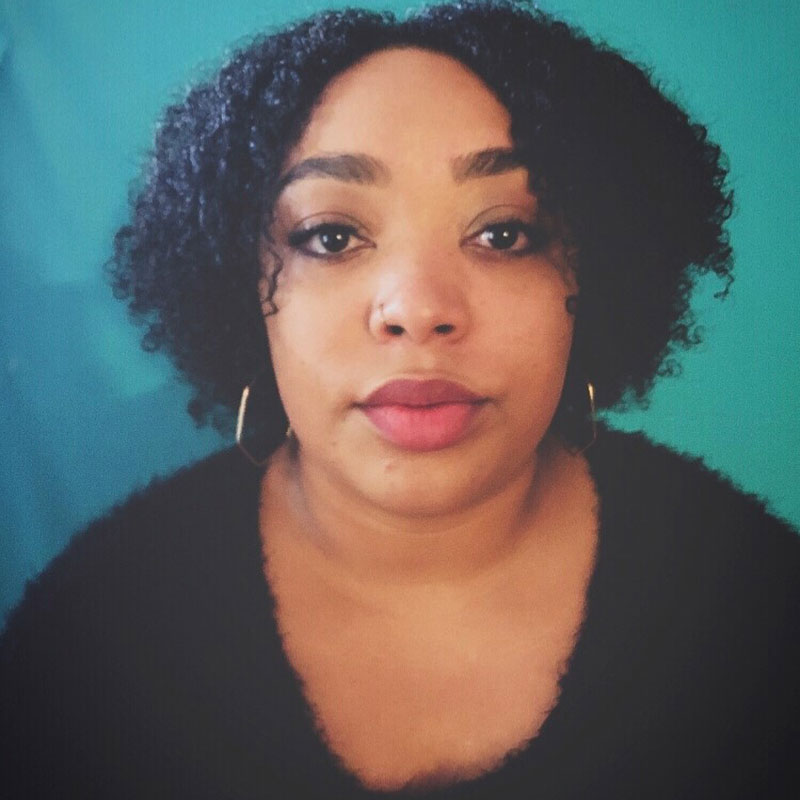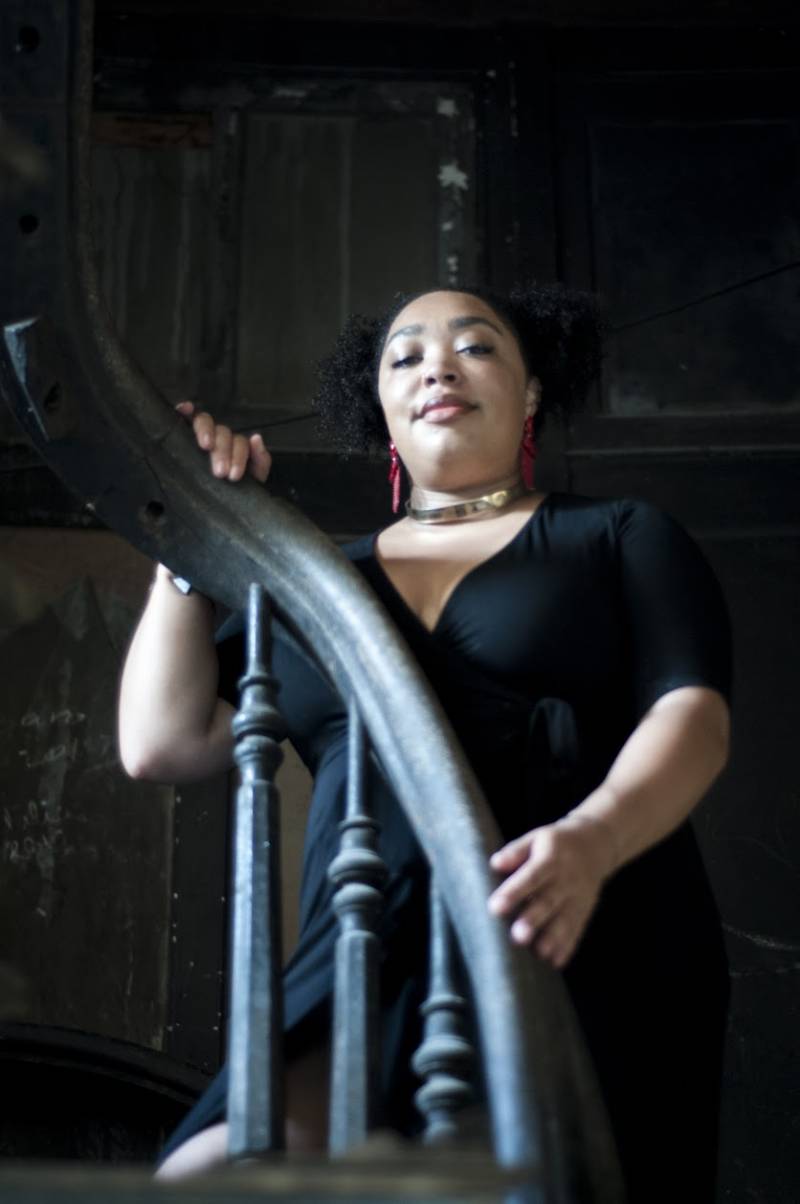
Editor’s Note: Welcome to National Poetry Month. Twice each week in April, KQED Arts & Culture will present a poem by a Bay Area poet. This series is curated by Rightnowish host Pendarvis Harshaw, who also speaks with each poet about their work.
‘Doing Donuts,’ by Lyn Patterson
Labyrinths of joy on asphalt; like the gleeful chalky lines of hopscotch, which decorate our summer sidewalks.
Round rotundas of vigorous jovial resistance. Symbols of our fresh-faced resilience.
Some things just don’t need to be explained; like why mama’s macaroni always smacks, or the jittery goodness of young love’s first taste of brown sugar and molasses, eating the pavement is spiritual and there’s a reason why we call it soul food.
The screech of skid marks and the stench of burning rubber seeps into our senses. Reminding us that life is more than just a hamster wheel.
That we are more than specks of dust trapped in the pull of the great big swirl. And it is our God-given right to be this young and reckless.
So, we bend the concrete, rotate the rear, peel back, and pray that we don’t wipe out.
Because even though there is so much waiting for us ahead, there is even more uncertainty about what’s coming next.
That’s why we always pour out a little bit of Henny, before we fight our never-ending battle with gravity.
For we are growing aware of the fact that we are stuck in a cycle of endings and beginnings that not everybody wins. And before we meet our end, we flirt with our own immortality.
You see, it is an evolutionary need of man to posture. Thus, we spell out our names in an infinity of endless arrays, that reminds everyone who passes this way, that we were here.
With each spin we are teetering on the cusp of whiplash, destiny, or destruction. Writing the eloquent language of our rage in the dirt.
For it could be so easy for us to be thrown from this orbit. But for this moment, we are the epitome of time itself. Rotating around the sun and leaving our mark emblazoned in the Earth.

Pendarvis Harshaw: Was there a specific instance that inspired this piece? If so, tell me about it.
Lyn Patterson: There were a few instances which inspired this piece. First, I live in Oakland a block away from the Estuary. I knew immediately when I pulled up to the neighborhood that I wanted to live here. I fell in love with my neighborhood almost immediately. During the day, you’ve got the water and a beautiful dog park where I go often to sit and write. At nighttime, especially on weekends, people show up with their souped-up cars to stunt and do donuts. I live on the corner of my building, so every weekend I get to see a sideshow in action. I love the celebratory culture of it, the stuntin’, posturing, listening to loud music and hanging out with friends. It reminded me a lot of where I grew up in Seattle.
Observing this got me thinking about my own youth and doing donuts with my friends. I feel like in my neighborhood, doing donuts was like a rite of passage—maybe a bit reckless, but a way to celebrate your youth, and leave your mark on the pavement. For me this period of life coincided with losing some friends and realizing that I was not guaranteed forever on this Earth. There’s a saying that everyone quotes that basically says, “At some point in your childhood, you and your friends went outside to play together for the last time, and nobody knew it.” I wanted to dig into this idea more, and sort of explore these ideas of youth, wildness, and existentialism through this poem.
Have you shared this previously? If so, how was the response?
I’ve shared this poem on Instagram and in a graduate poetry class I’m taking at Mills College. The response has been great. Again, it’s about that moment of time in your youth when you just feel so alive and connected to the friends you have around you. Where nothing matters and being reckless is just part of what makes that time in your youth so special. I think most people can resonate with the spirit of the poem even if they have never done donuts.
I will say that as a Black poet, these are often the types of life experiences I’m interested in capturing. I think for far too long, mainstream Black storytelling has centered narratives of struggle and resistance, which are important, but not the epitome of who I am as a human being. In my work, I’m interested in centering Black joy and humanity. I’m often trying to tune into experiences like recklessness, falling in love, feeling uncertain about the future, and coming of age—and wanting to tell stories about those life experiences through my lens as a Black woman.
Where are you from, and what does it mean to be a poet in the Bay Area right now?
I am from the Central District of Seattle, though my family now resides in Renton, Washington. Just before coming to the Bay, my husband and I sold all of our stuff and spent 11 months on the road traveling around the United States and internationally, figuring out where we wanted to settle down. In the 10 years before that, I lived on the East Coast mostly in Baltimore, Philly, New York, and New Haven. Coming back to the West Coast has felt like coming home in a sense. When I was on the East Coast, I started my poetry journey and had some wonderful communities that I was a part of. At the same time, there was always sort of an air of hustling and trying to “make it” that kept me from truly feeling a part of any one community. That hustler’s mentality also meant that I was constantly working. When I moved to the Bay, I found myself saying “no worries” again, and actually meaning it. It was a complete lifestyle change where I’ve felt like I’ve had the opportunity to slow down.
I also found so many supportive arts communities here. I joined an organization called Gold Beams, which supports Black artists in the Bay and curates really dope experiences for artists to showcase their talents. Because of working with them, I’ve met so many wonderful people and fellow poets. The artist community here is unlike any place I’ve ever lived. At the same time, I recognize that there’s a lot happening in the Bay right now; for example, the effects of the housing crisis, environmental impacts, and gentrification are really palpable. There’s such a powerful history in Oakland of Black activism which poets and artists have always been a part of. And I want to be a part of it! But I also think that as a poet who is a transplant to the wonderful city of Oakland, there’s a responsibility to listen, observe, and be mindful of my impact. So, I’m still figuring out what it means for me to be a poet in the Bay right now.
What’s the purpose of poetry?
I think that poetry is an important component of understanding life. As a teacher, I see a lot of what we teach children about history and experience depending on research or non-fiction writing, but I think poetry is just as important! It’s writing that helps us to unpack the more ambiguous concepts of life and being human. My favorite poet, Audre Lorde, once said, “Poetry is not a luxury. It is a vital necessity for our existence. It forms the quality of the light within which we predicate our hopes and dreams toward survival and change, first made into language, then into idea, then into more tangible action.” I’ve learned through sharing my poetry with others that poetry can often create communities of care through shared experiences, and has the power to move people’s hearts and minds. There’s a reason you can find poetry in the Bible, the Quran, the Vedas and so many other religious texts. To me, the purpose of poetry is to make tangible the magic of life that we can’t understand through science. Those things we all feel but have trouble putting into exact words.
![]()
More information about Lyn Patterson and her book ‘Everything Sucks & I Hate It Here‘ can be found here.

